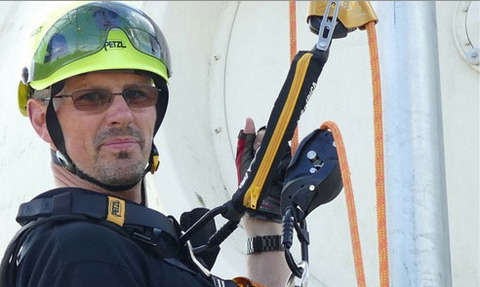Health and safety training needs to support innovation
22 Aug 2018

To develop a proactive health and safety culture that encourages innovation and better performance, try making your team more ’T-shaped’, advises David Towlson.
Engineering is, by its very nature, a profession of innovation; the Royal Academy of Engineering states as much with one of its strategic goals being to make the UK the leading nation for engineering innovation.
But its website also insists that managing risk and promoting safety is paramount in engineering practice.
So how can health and safety enable – rather than stifle – innovation and creativity? In short, by giving people the knowledge and skills to work safely they can be empowered to explore new ideas. What’s more, health, safety and environmental considerations can actually inspire engineers to devise innovative solutions.
Striking a balance
There is a growing trend to develop multi-skilled employees who have a wide-range of skills as well as a key specialism.
There is even a term for this kind of worker: ‘T-shaped’. The top line of the T represents the broad knowledge, skills and experience the person has, while the vertical line is all about their deeper professional level competence. Such employees are seen as being able to improve the quality of decision-making within organisations, be more innovative and are capable of thinking more strategically in their roles.
How can health and safety enable – rather than stifle – innovation and creativity? By giving people the knowledge and skills to work safely
Stewart Mardle, 44, who works for telecommunications provider BT as senior manager tower & rigging policy (pictured), is an example of such manager. A chartered health and safety professional, he holds a NEBOSH National Diploma in Occupational Health and Safety.
He explains his remit: “My team and I are responsible for around 120 engineers. This covers BT’s 300 radio towers as well as radio equipment installed across more than 6,000 sites, including third party locations. Our work involves delivering training, carrying out audits and implementing safer and better ways of working all round.”
Whilst health and safety is a major part of what Stewart does, what makes him ‘T-shaped’ – and far more than a health and safety specialist – is his broad knowledge, gained from many different roles throughout his career. Since joining BT as an apprentice engineer Stewart has also been a planning supervisor, an IT manager, an estate and property manager and a relationship manager for BT’s Reach programme.
Empowering staff
While Stewart has made health and safety the vertical line in his T-shape; he has encouraged others within the broader engineering team to gain a NEBOSH National General Certificate as a way of strengthening their top-line health and safety skills.
“The NEBOSH Certificate has given them more confidence around health and safety and importantly, an ability to make better decisions and feel empowered rather than stifled.”
As he adds: “I’m confident that I can just let my team go out and do their jobs. Of course audits remai important, but I don't need to check up on them all of the time and interfere, because I know that with the level of training and qualifications they have they are more than capable of doing their job well. And doing it safely.”
David Towlson is head of qualifications and assessment at the National Examination Board for Occupation Safety and Health (NEBOSH).

